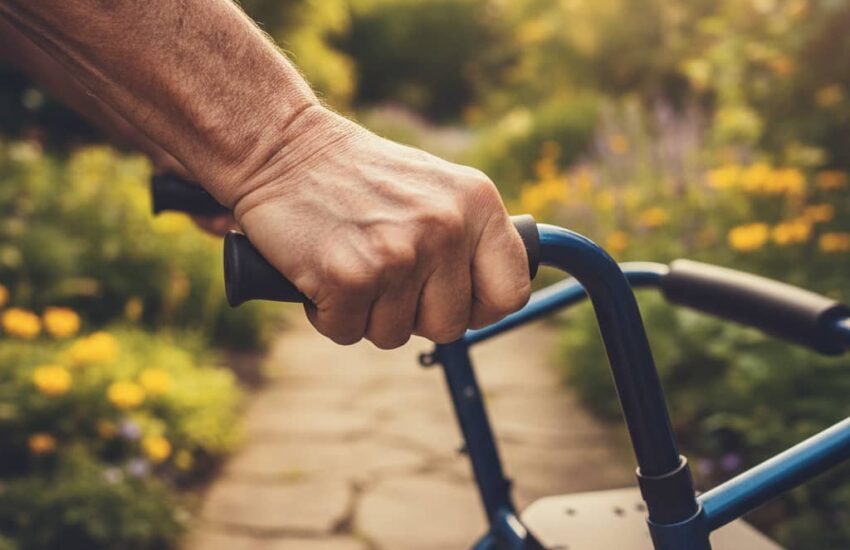I will admit, there was a time when I viewed my father’s first cane with a sense of sadness. To me, it was a stark, wooden declaration of his declining strength, a symbol of the vibrant man he was slowly leaving behind. I saw it as a limitation. It took a long time, and a few close calls, for me to understand that I had it completely backwards. That cane was not a cage; it was a key. It was the very thing that allowed him to walk to his own garden, to navigate the hallway to the kitchen for a late-night glass of water, to maintain his rhythm of life without living in constant fear of a fall. This shift in perspective opened my eyes to the entire world of assistive devices, the silent, unsung guardians that stand between our loved ones and a catastrophic loss of independence. I used to see canes and grab bars as symbols of limitation. Now, I understand they are not concessions to age, but ingenious tools that grant my father the freedom to navigate his own home with confidence.
The most profound change these devices bring is a tangible sense of security, and this begins with the simple act of moving from one place to another. I watched my father’s hesitation before taking a step on the polished kitchen floor. It was a flicker of fear in his eyes I had never seen before. Introducing a properly fitted walker with a seat did more than just provide stability; it gave him back his courage. He could now move with purpose. In the bathroom, a place of immense danger for any senior, we installed grab bars and a shower chair. What was once a daily exercise in anxiety became a routine task again. These are not dramatic interventions, but they are the fundamental building blocks of a safe environment. They transform a hazardous space into a manageable one, not by removing the challenge, but by providing the support to meet it head-on.
Beyond the physical support, I began to notice a more subtle, yet equally important, benefit: the restoration of confidence. There is a deep psychological toll that comes from relying on another person for every basic need. The act of asking for help to get out of a chair, or to walk to the bathroom, chips away at a person’s sense of self. When my father started using a raised toilet seat and sturdy bed rails, he regained the ability to perform these intimate acts on his own. The relief on his face was not just about physical ease; it was about dignity. He was in command of his own body again. These devices became agents of autonomy, quiet affirmations that he was still the captain of his own ship, even if the waters were now a little rougher.
In nursing homes, the role of these devices expands from personal aid to a core component of professional care. I have seen how a patient lift is not just a piece of equipment; it is a vital tool that protects both the resident and the caregiver from the strain and danger of manual transfers. Bed alarms and wearable alert pendants create a safety net that allows the staff to monitor dozens of residents efficiently, ensuring help can arrive in moments, not minutes. In this setting, assistive technology is the backbone of a scalable, safe, and dignified care system. It ensures that the staff’s energy can be focused on human connection and complex care, rather than being consumed entirely by the physical task of moving people from point A to point B.
My perspective has been permanently altered. I no longer see a walker and see frailty. I see freedom. I see a device that allows its user to join a social gathering without worrying about the distance to the nearest chair. I see a medication dispenser with a timer not as a reminder of forgetfulness, but as a guarantee of health and stability. These tools are testaments to human ingenuity, designed not to highlight weakness, but to amplify remaining strength. They are the quiet, steadfast partners in the mission to allow our elders to live not just safely, but fully, on their own terms for as long as possible.
References
World Health Organization. (2021). Assistive technology. WHO. https://www.who.int/news-room/fact-sheets/detail/assistive-technology
National Institute on Aging. (2022). Assistive devices to help with daily activities. U.S. Department of Health and Human Services. https://www.nia.nih.gov/health/assistive-devices-help-daily-activities
Mann, W. C., & Ottenbacher, K. J. (2019). Technology to improve independence and safety for aging adults. *Journal of Aging & Social Policy*, 31(2), 87-105. https://doi.org/10.1080/08959420.2019.1568615
United Nations. (2022). Disability and assistive technology: Ensuring inclusive communities. UN Enable. https://www.un.org/development/desa/disabilities/resources/assistive-technology.html
Centers for Disease Control and Prevention. (2023). Home modifications and assistive technology for fall prevention. https://www.cdc.gov/homeandrecreationalsafety/falls/adaptations.html

